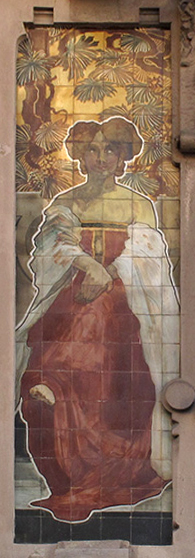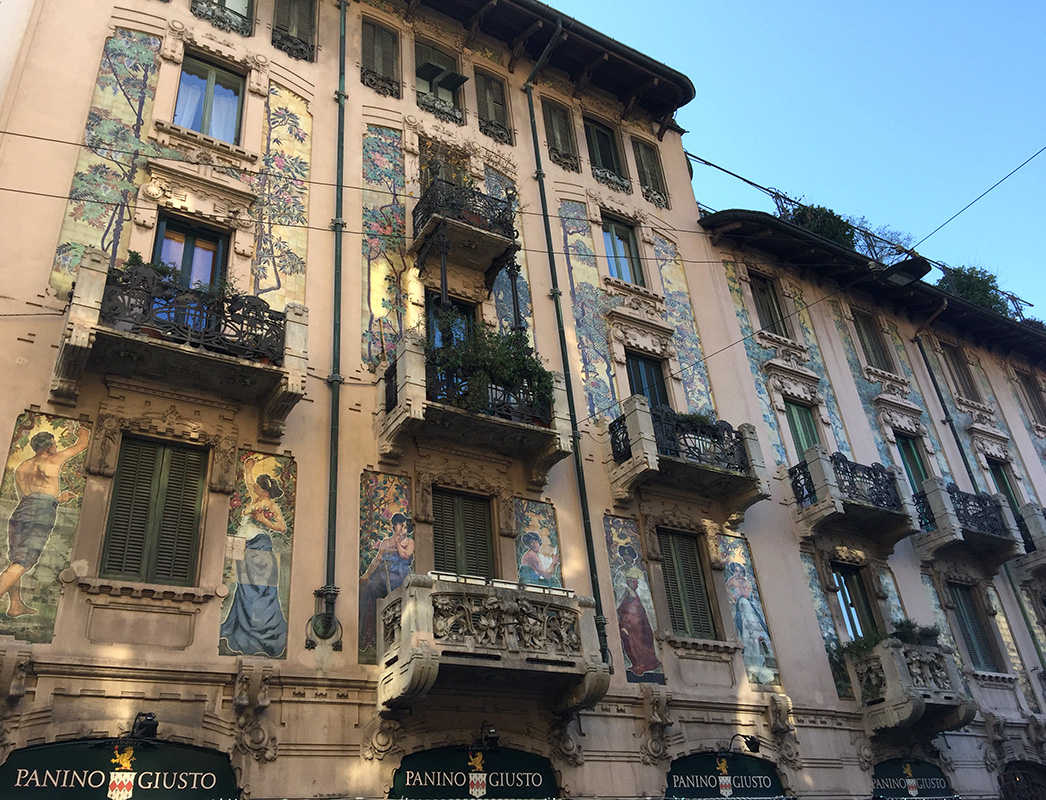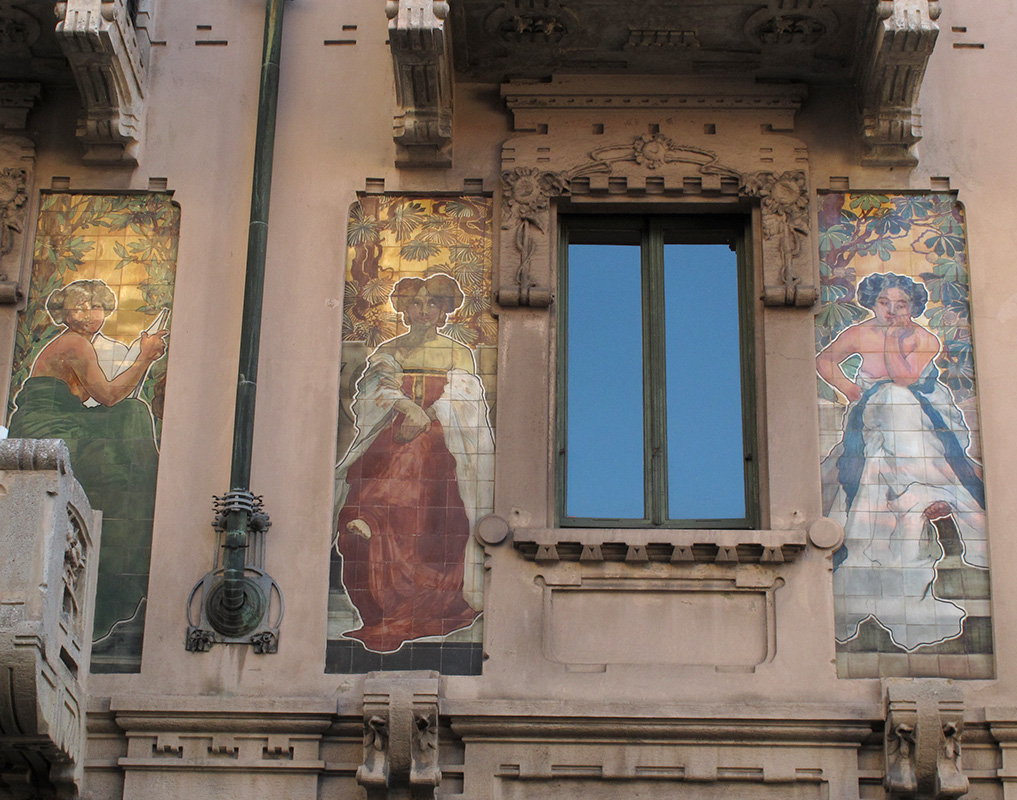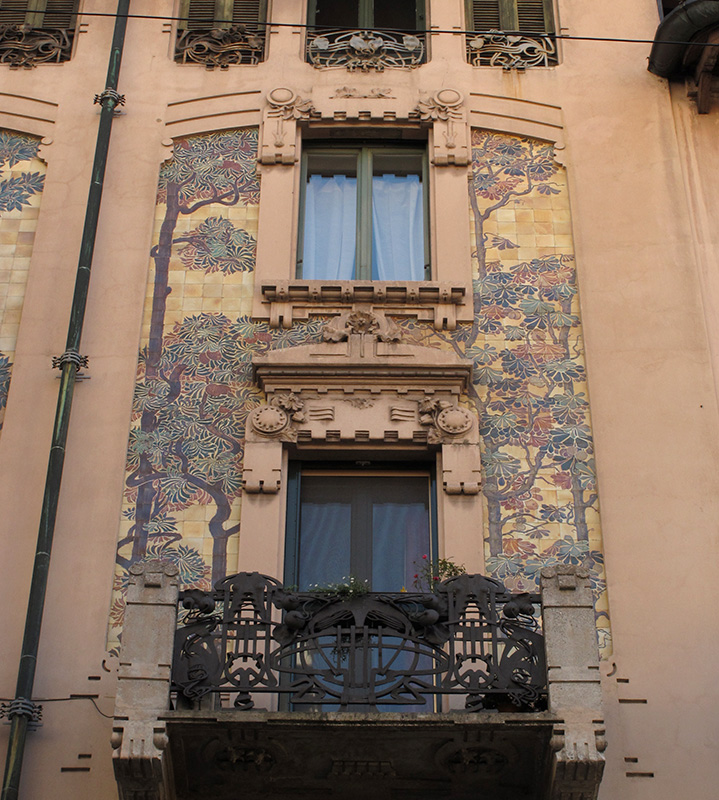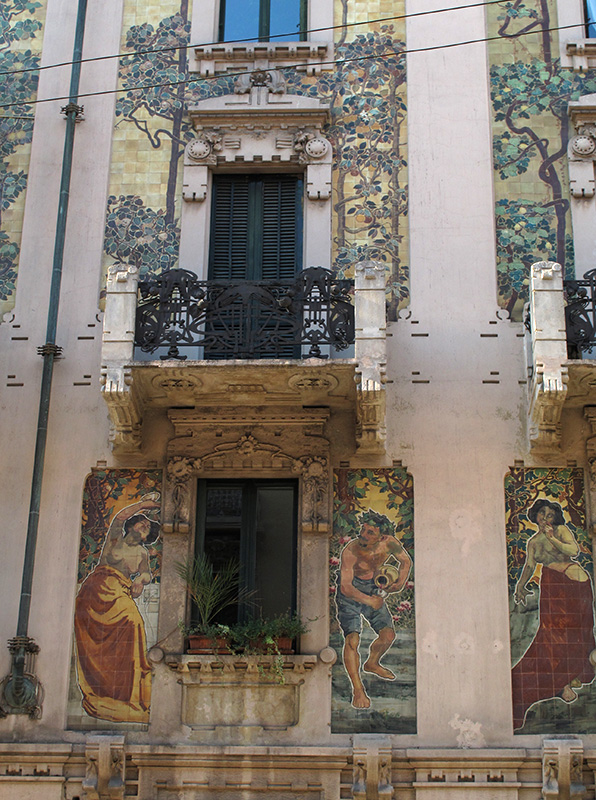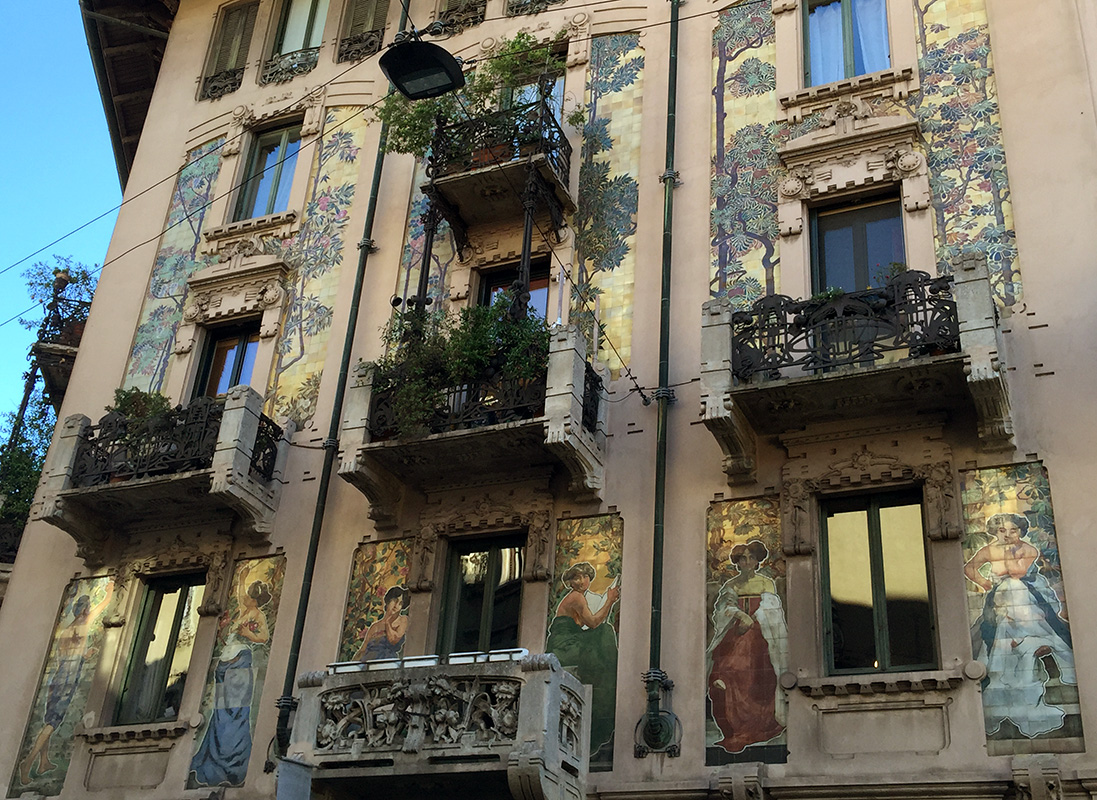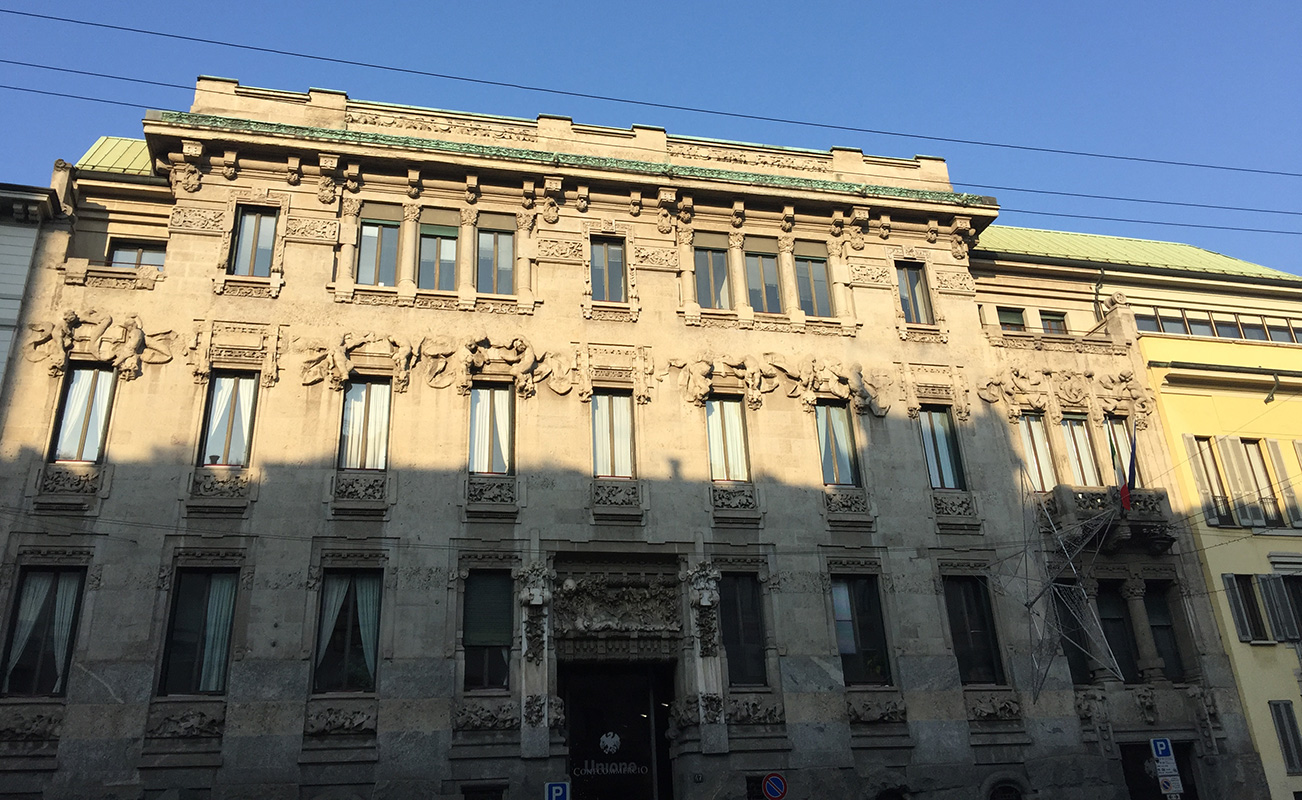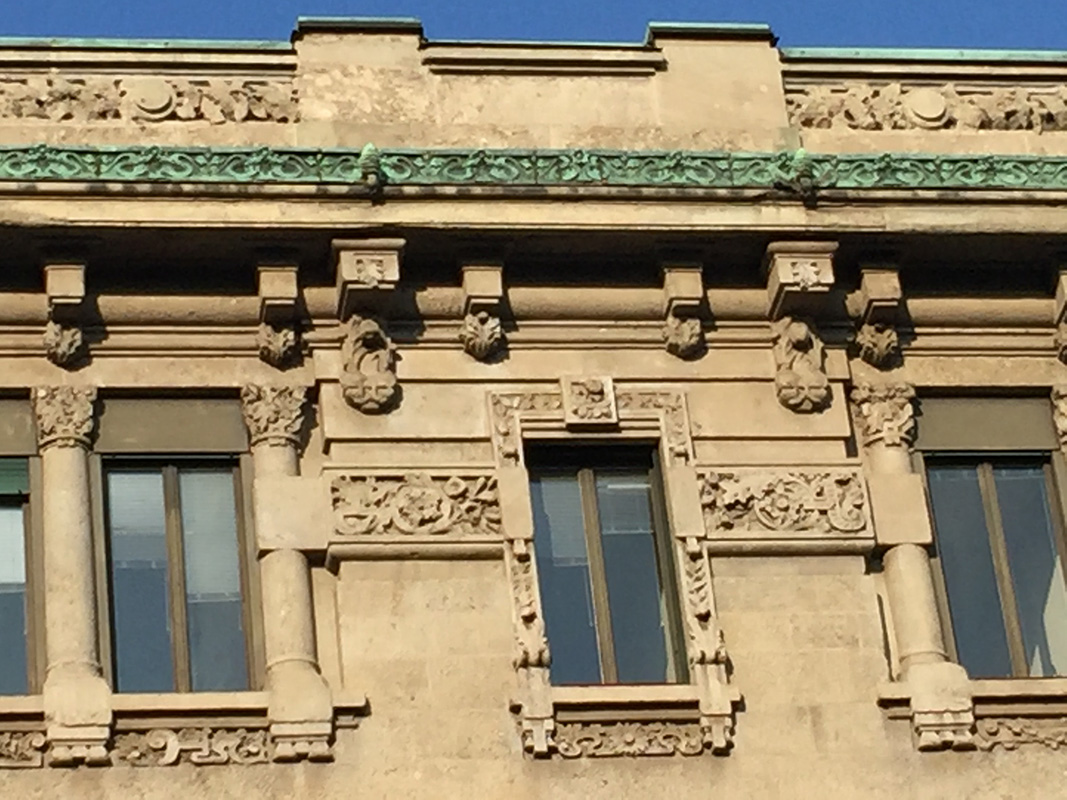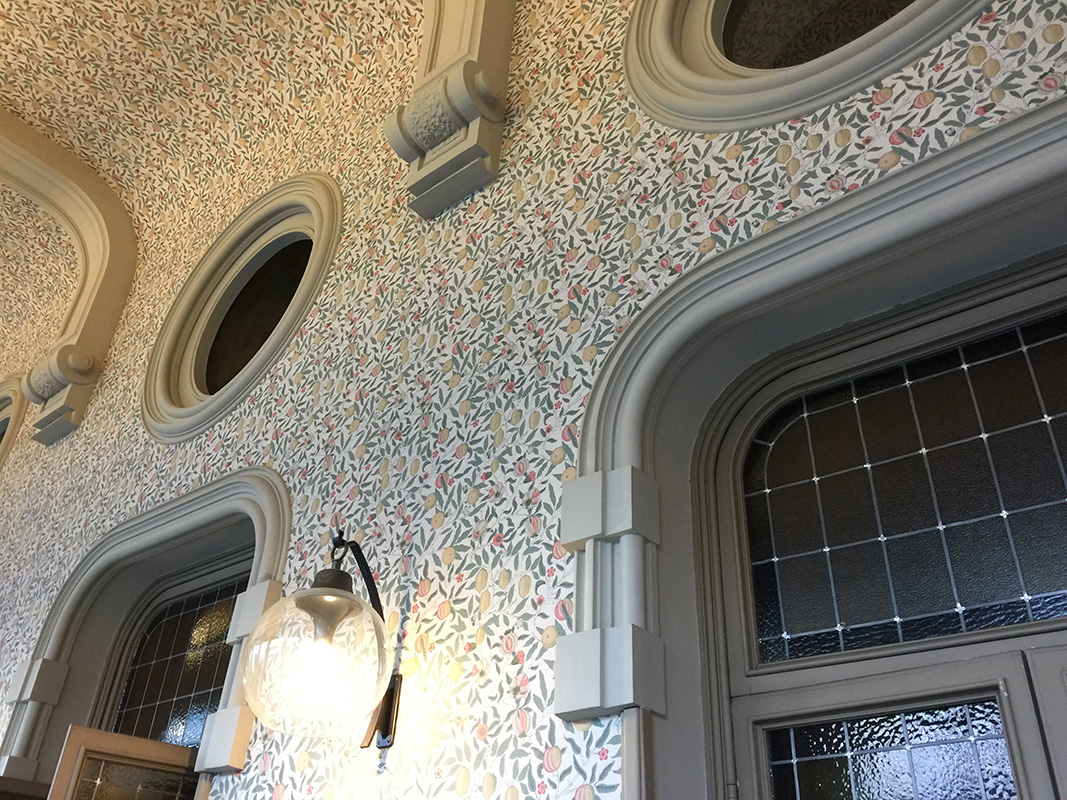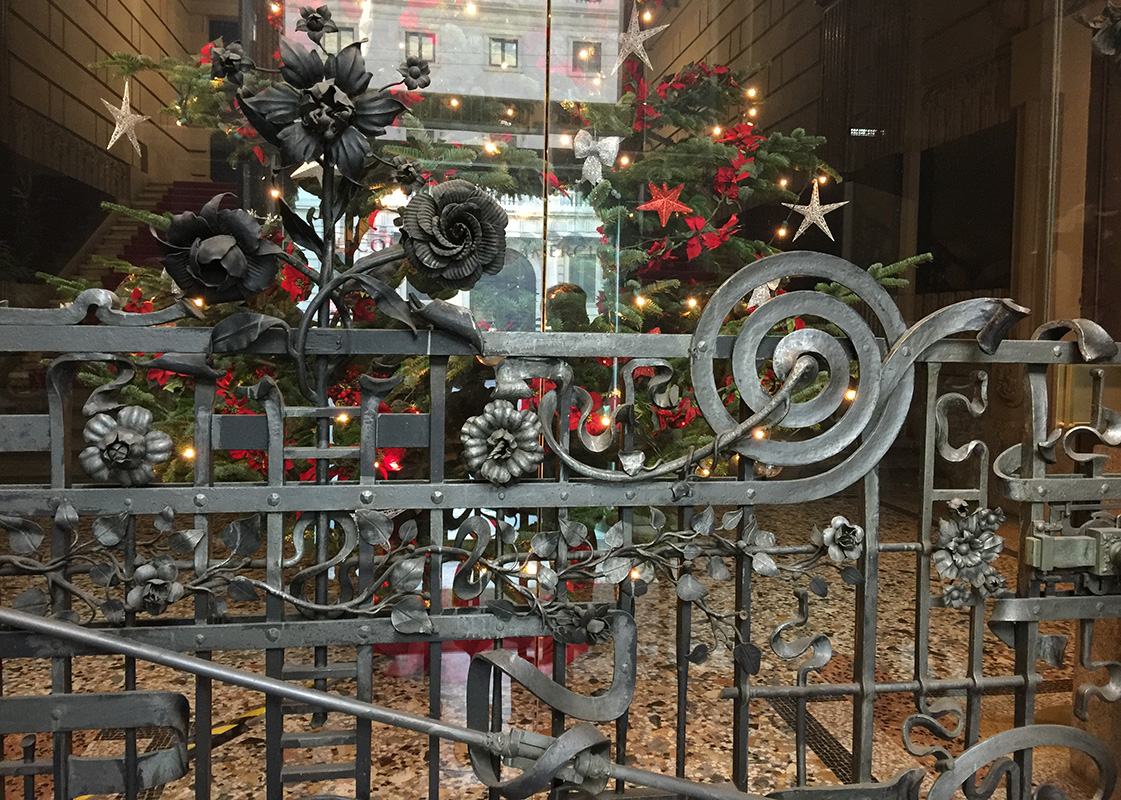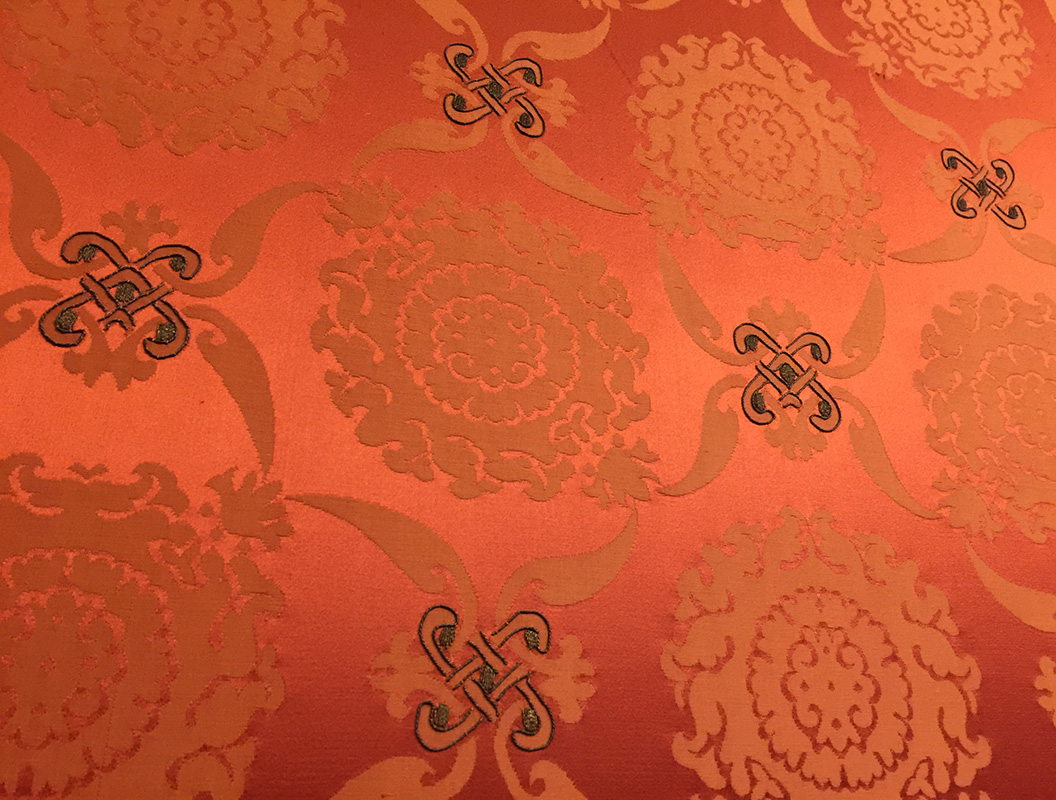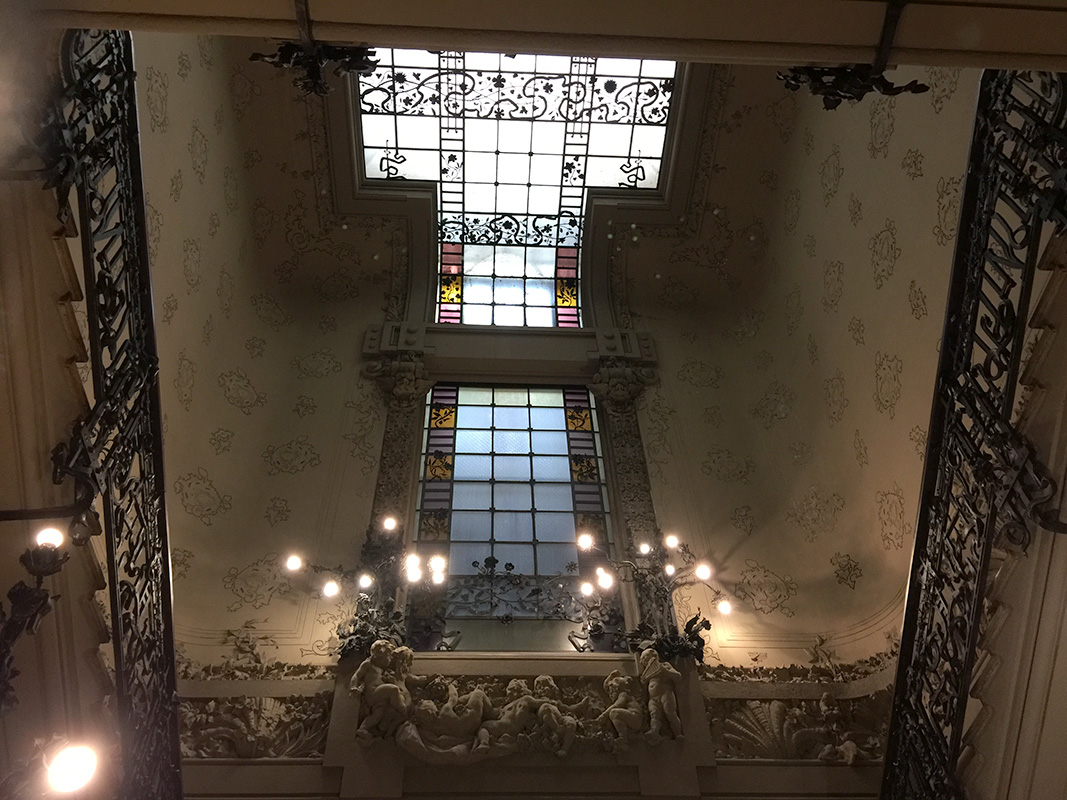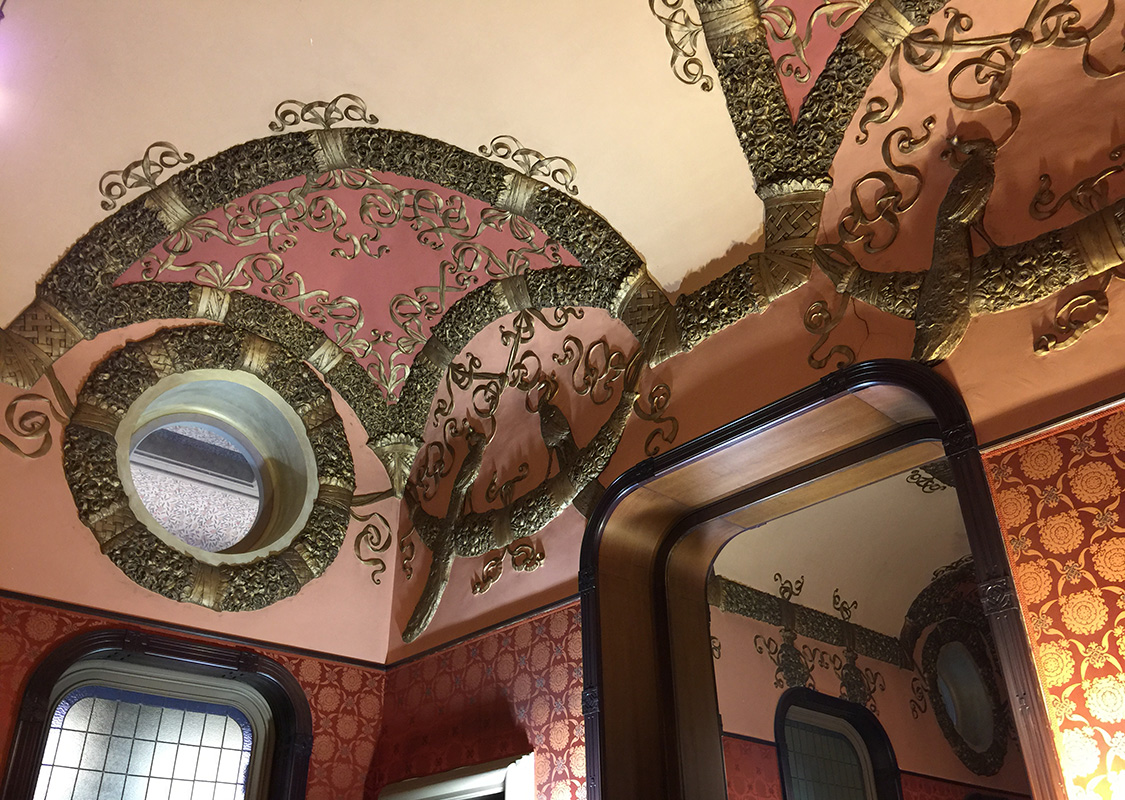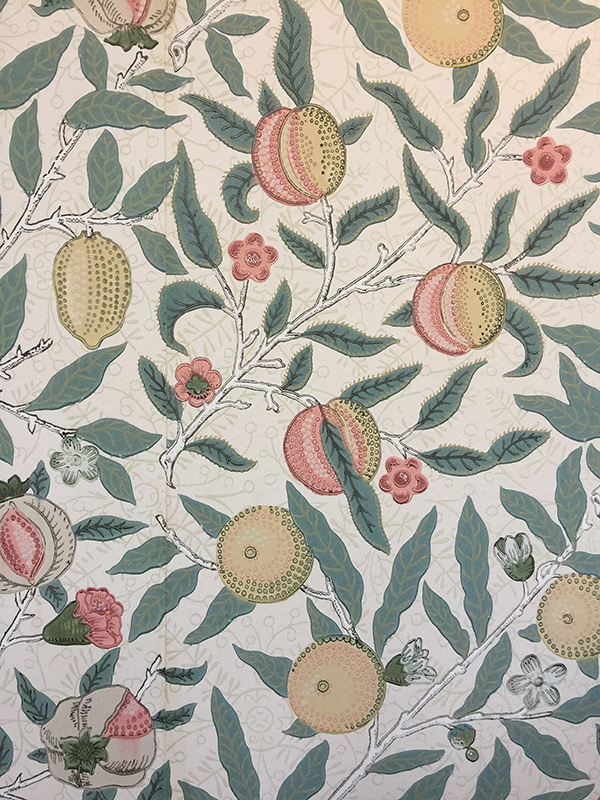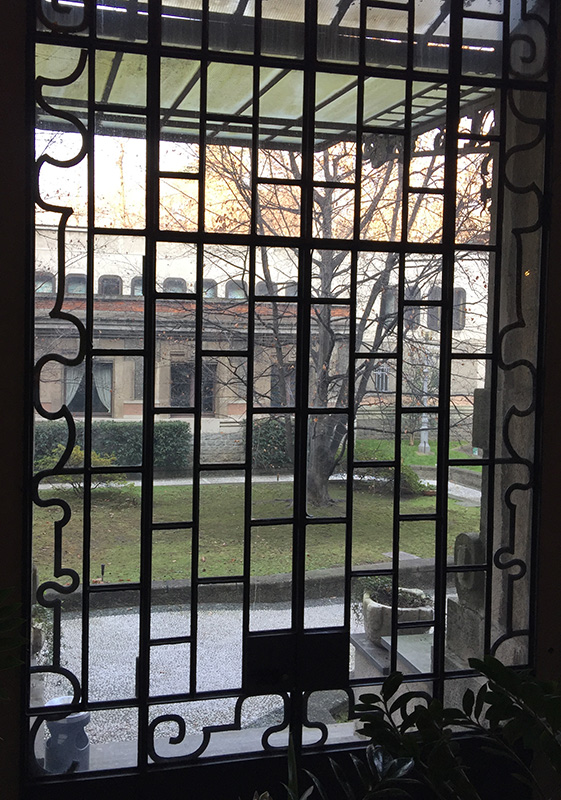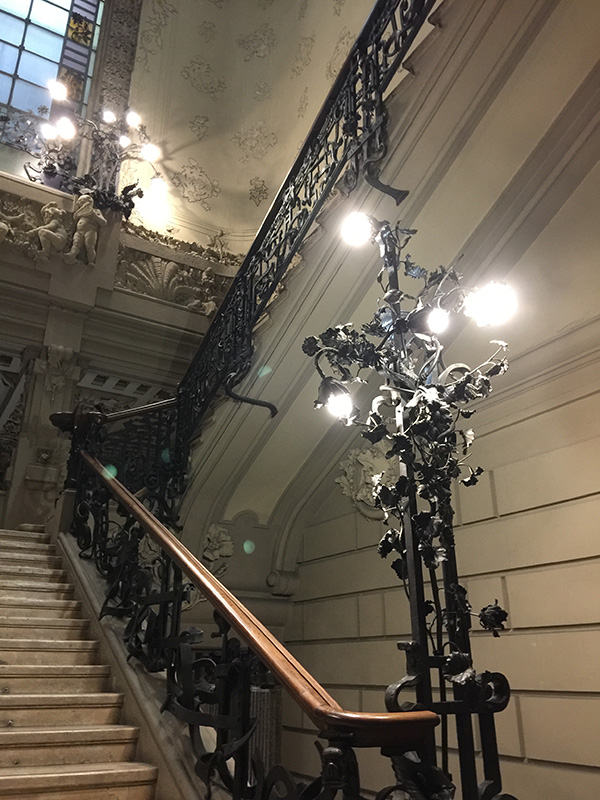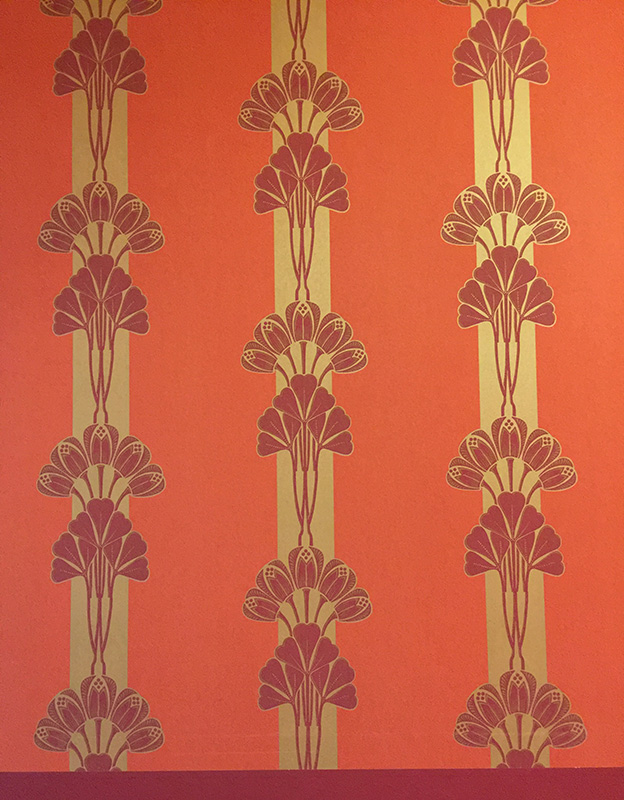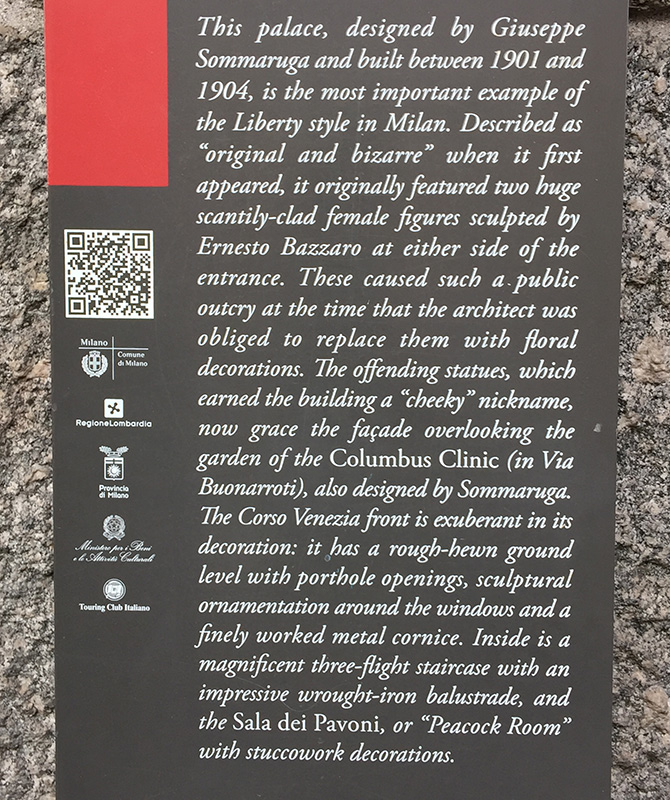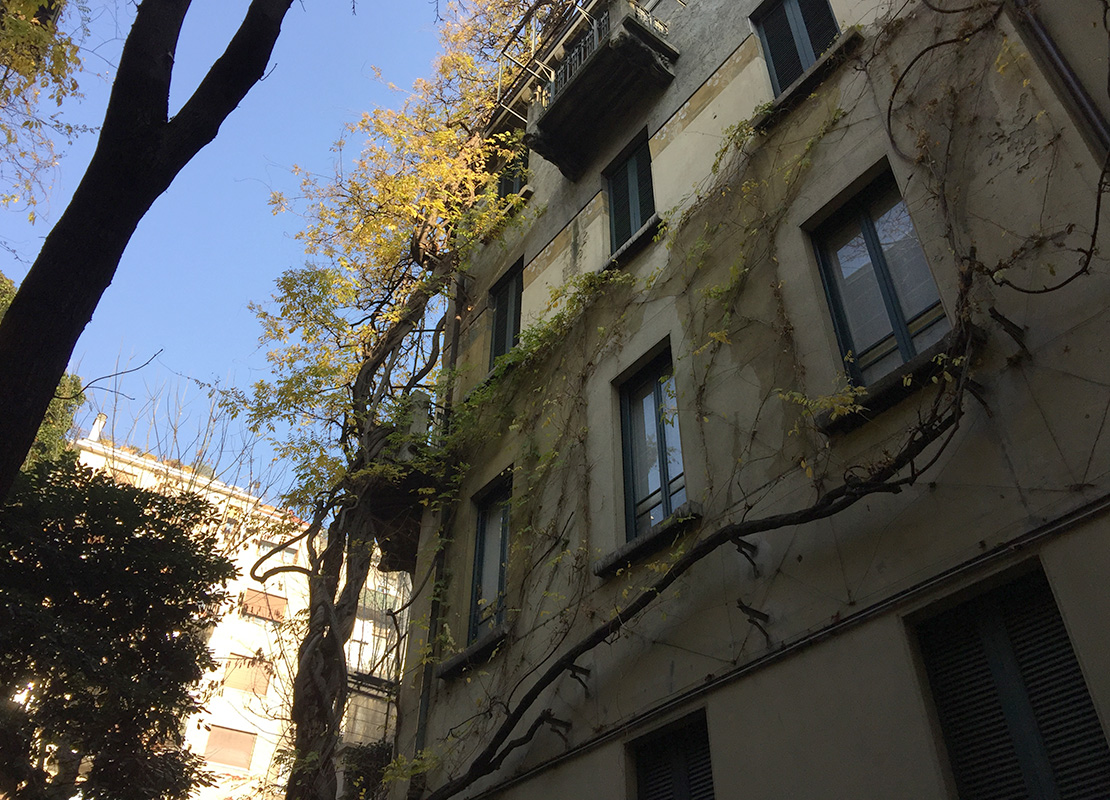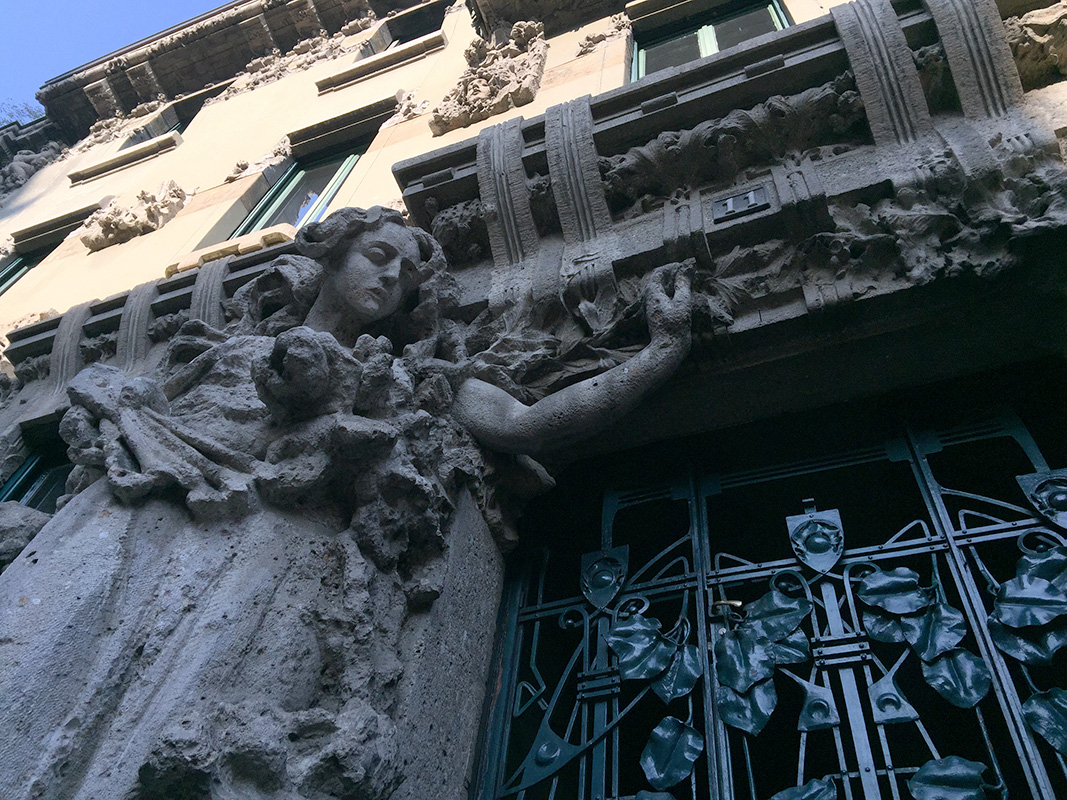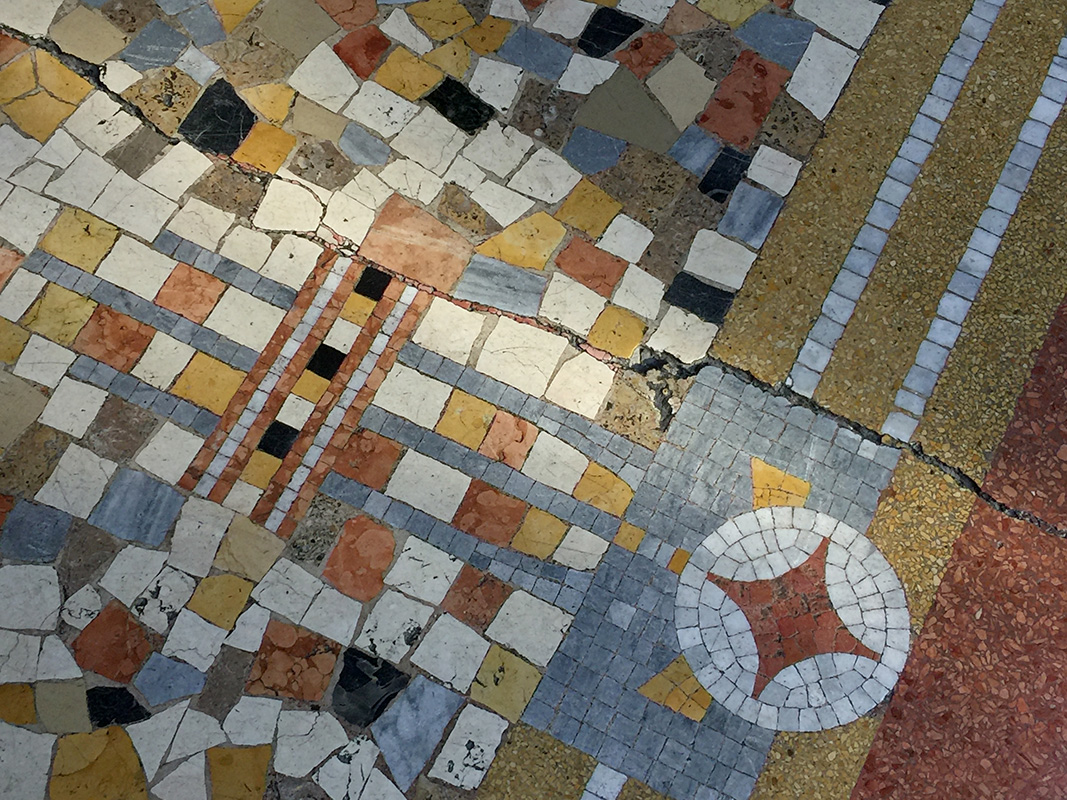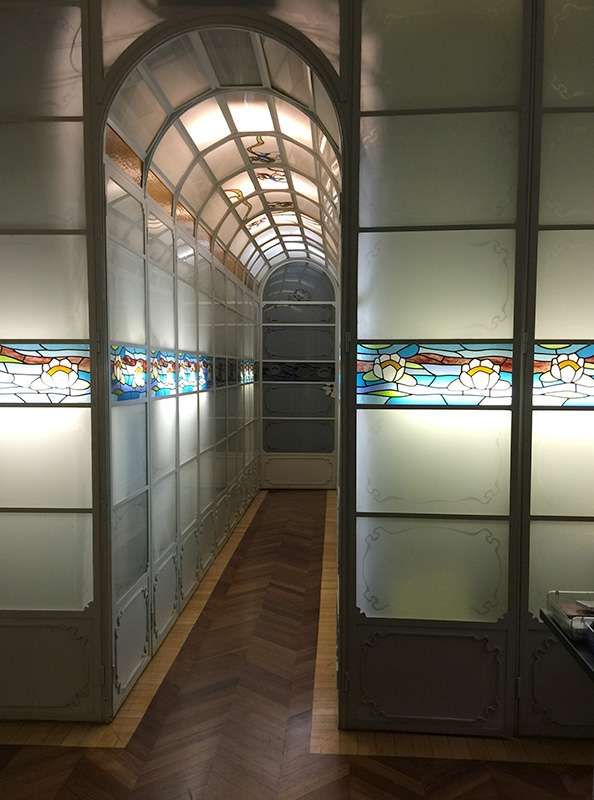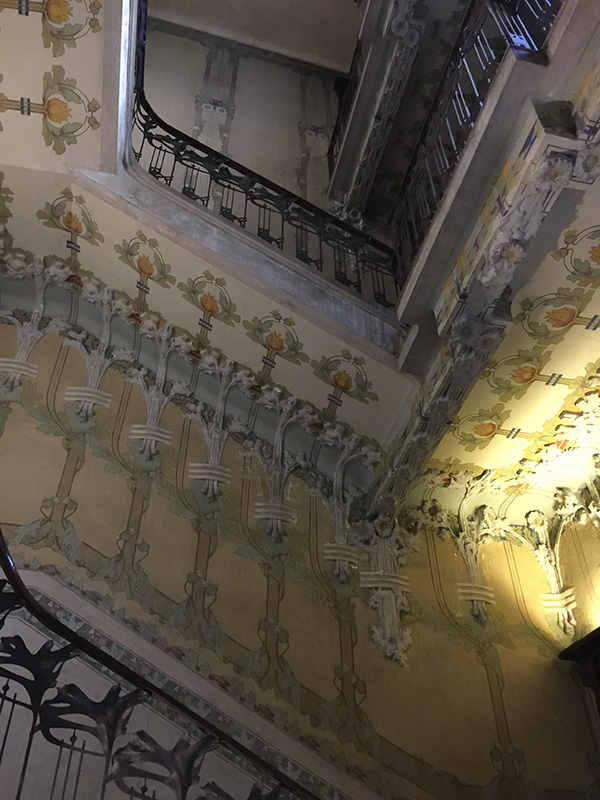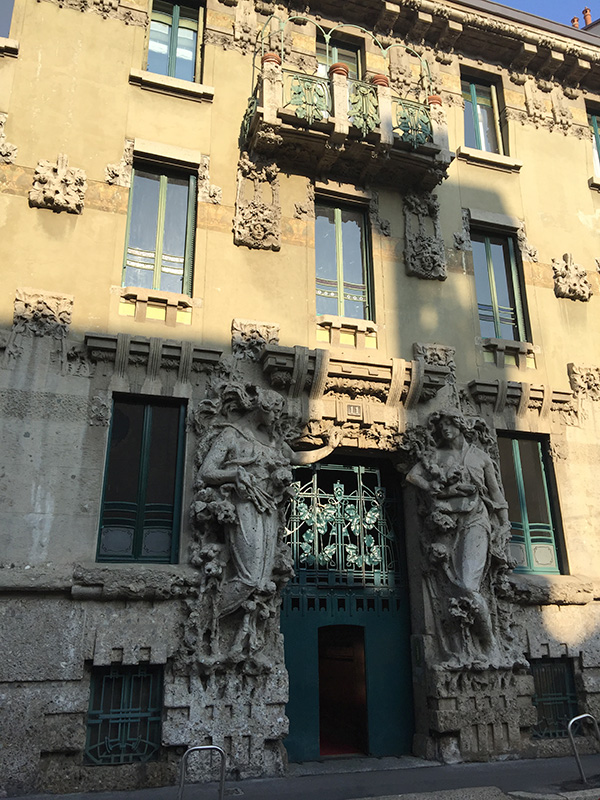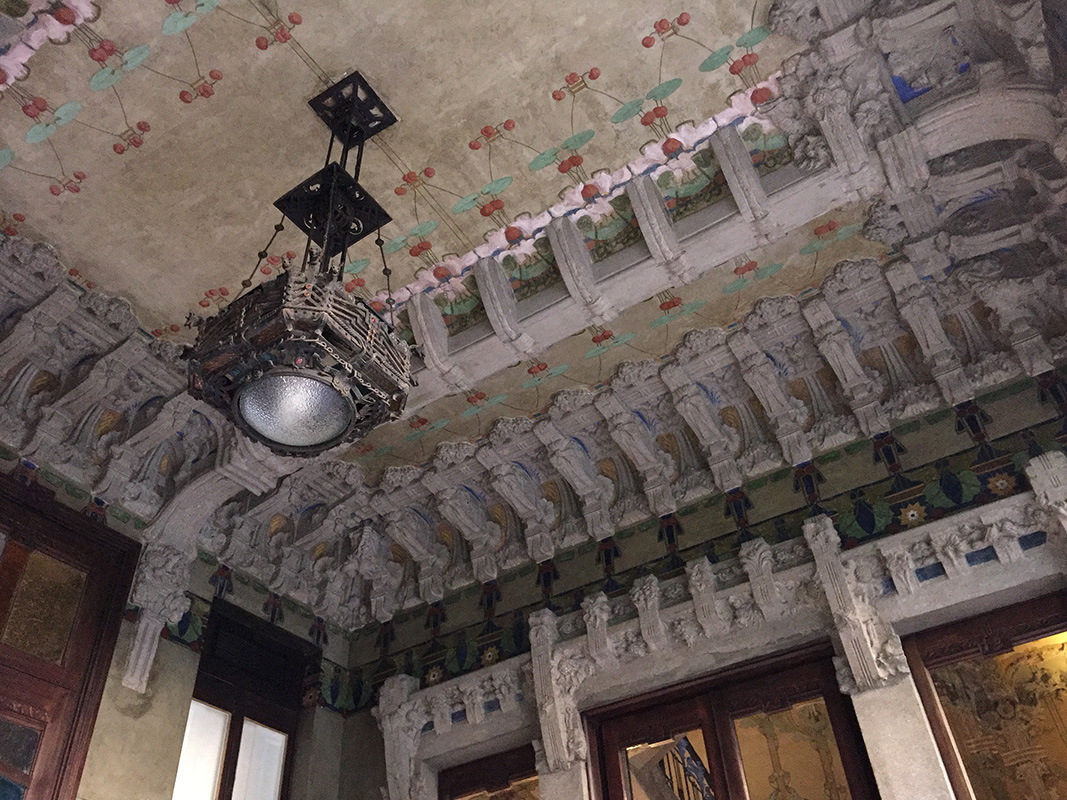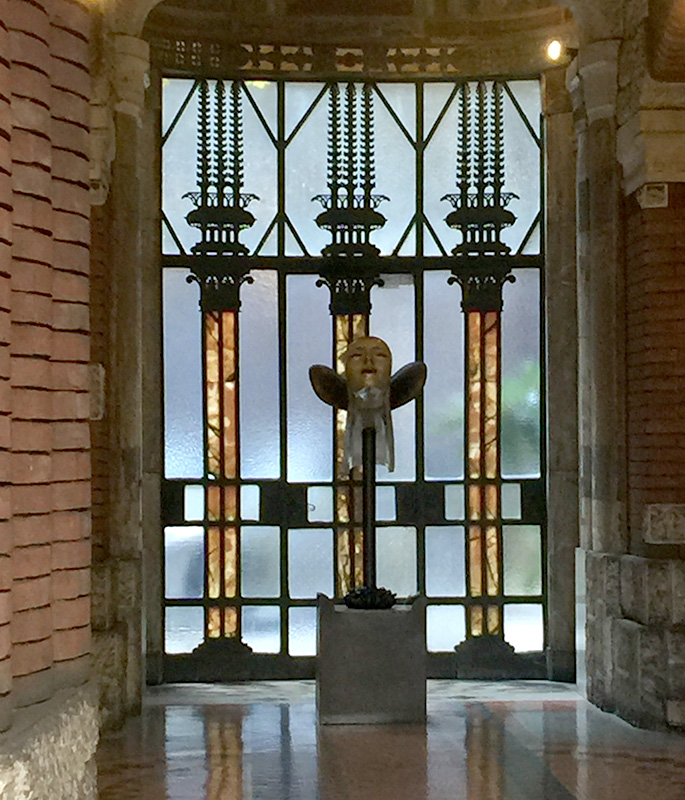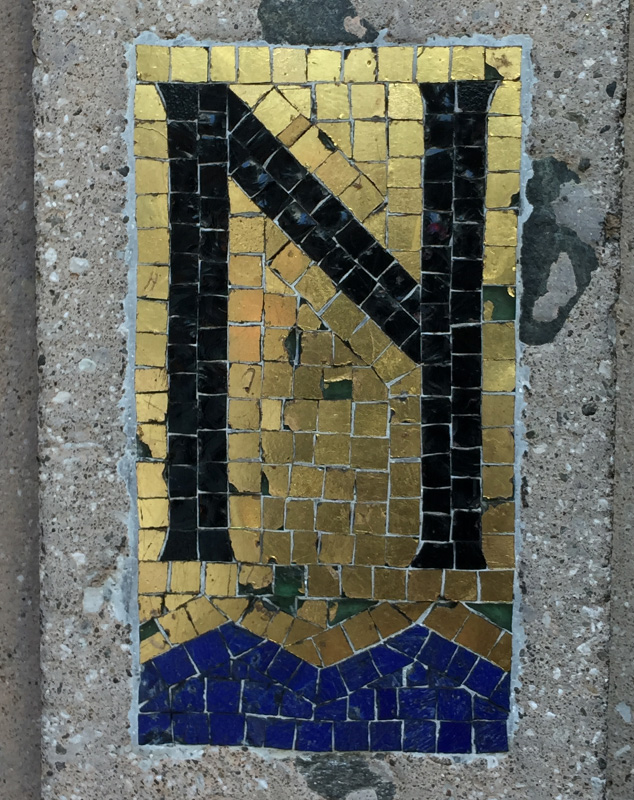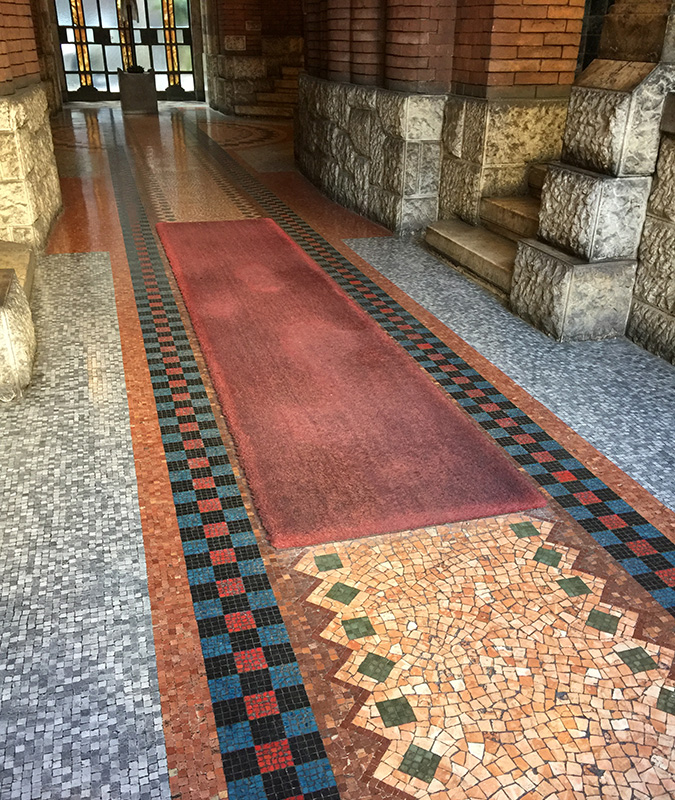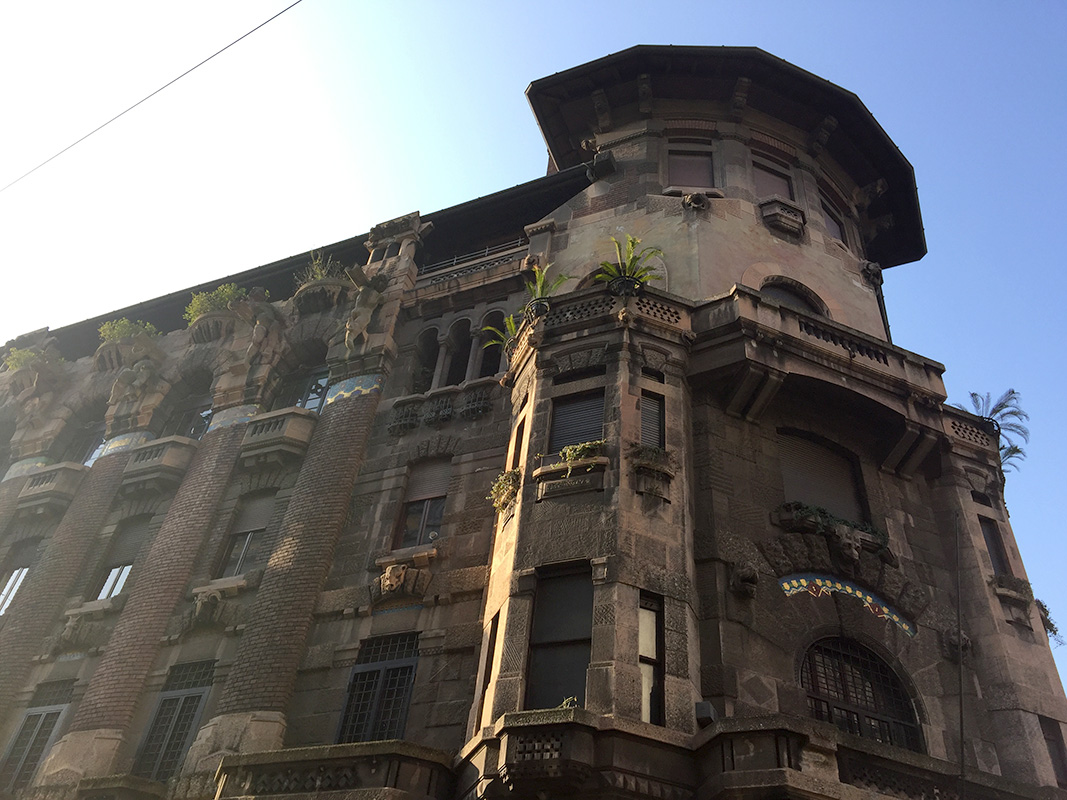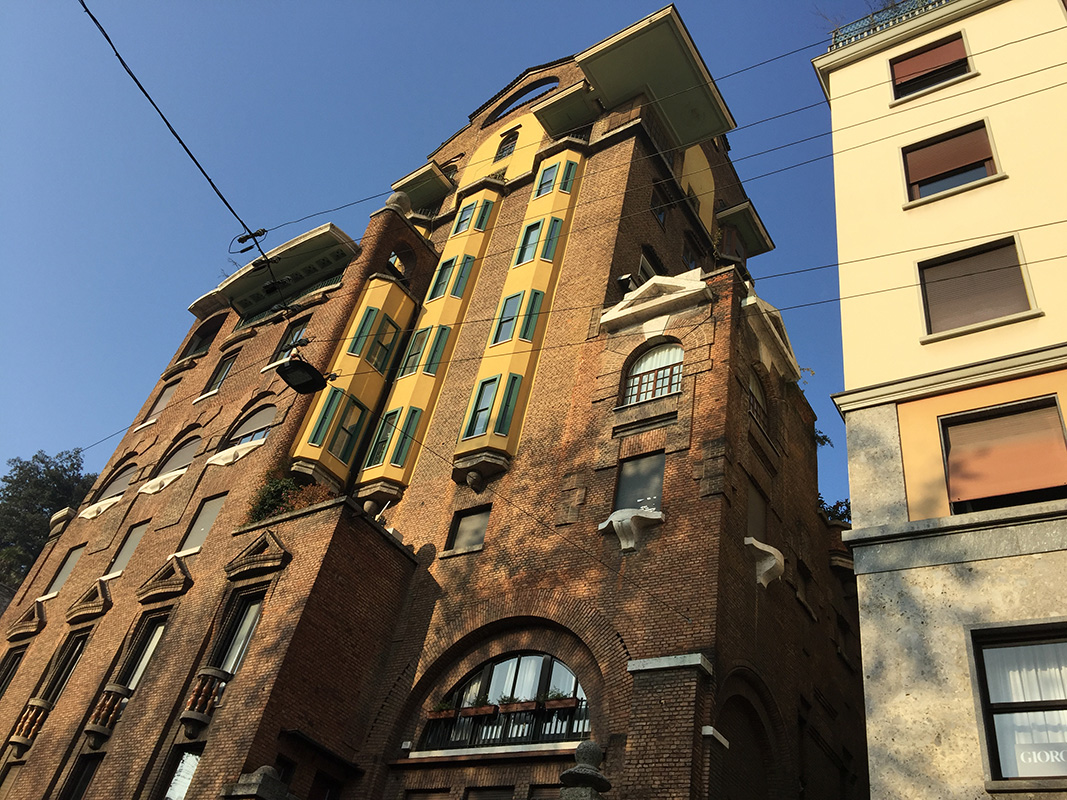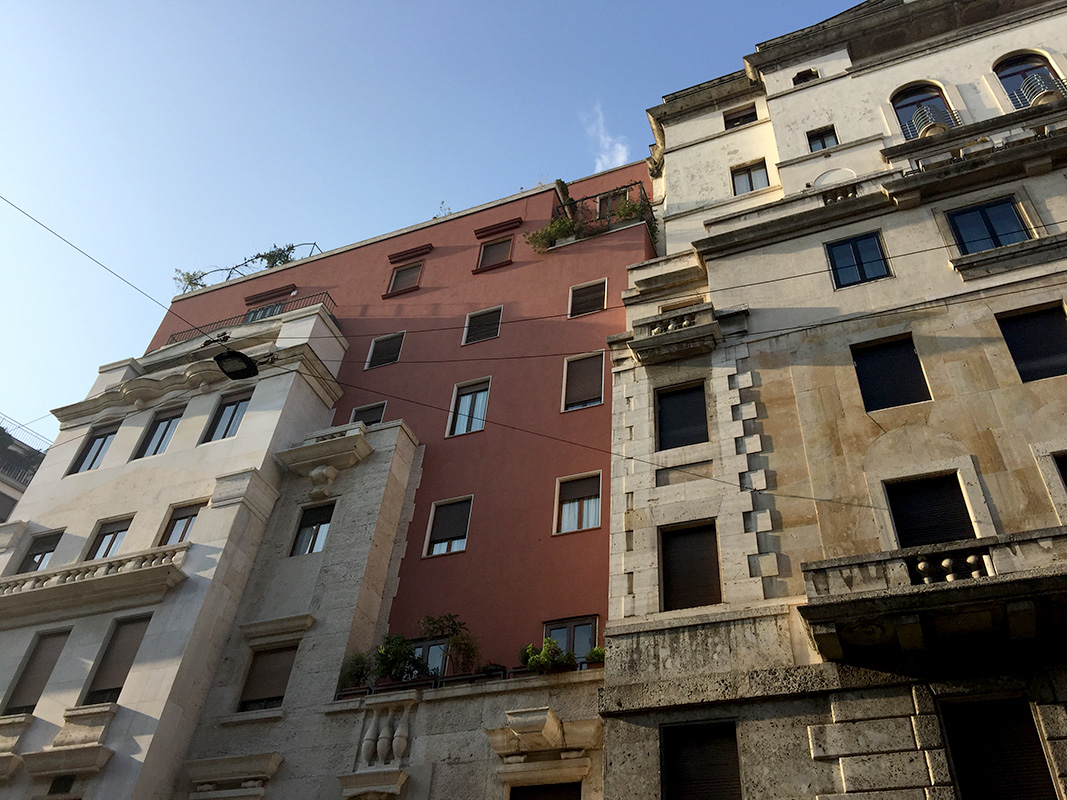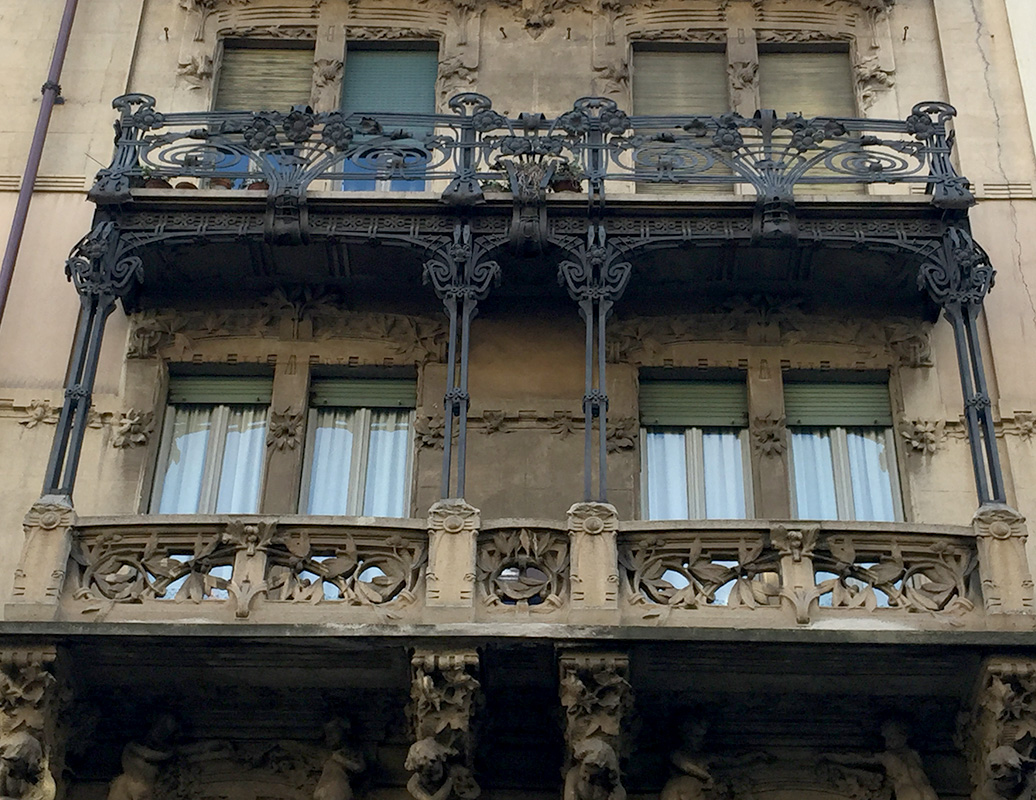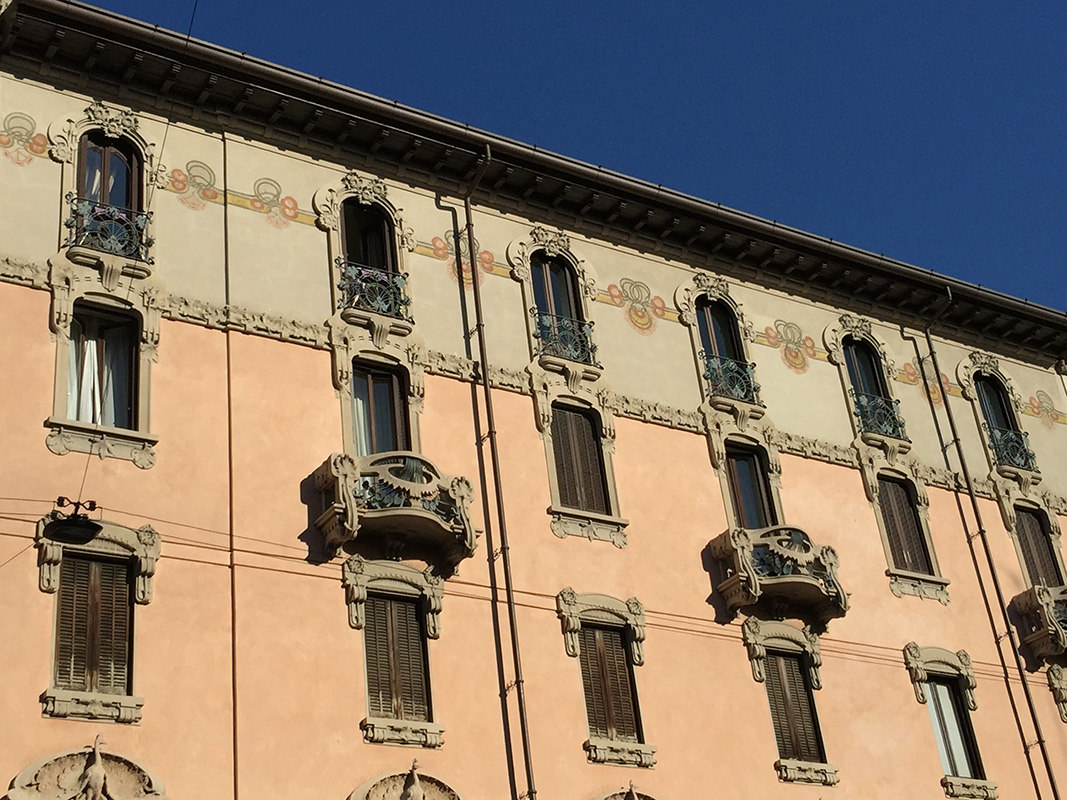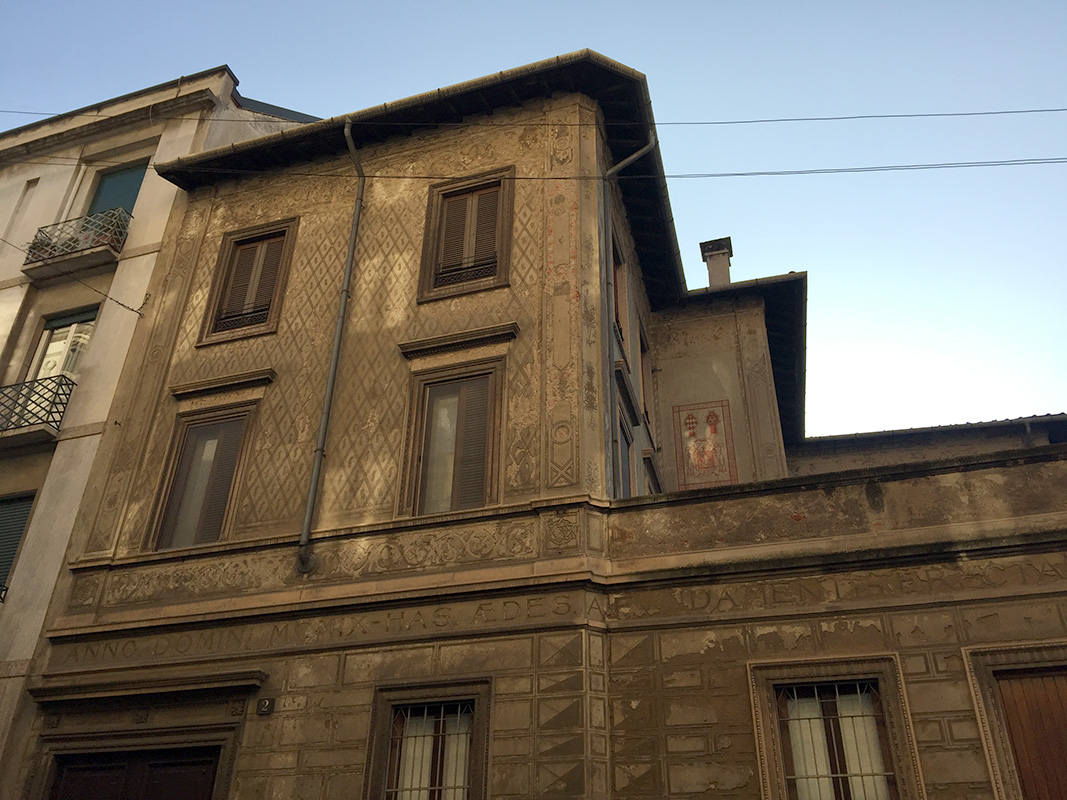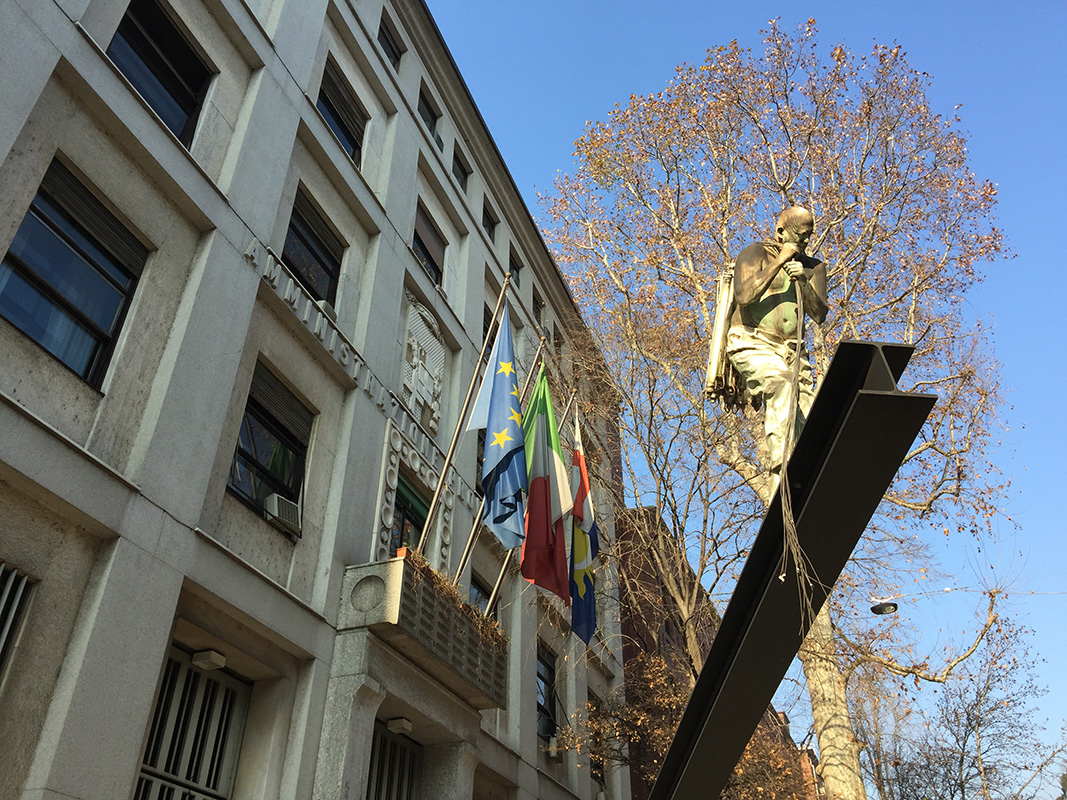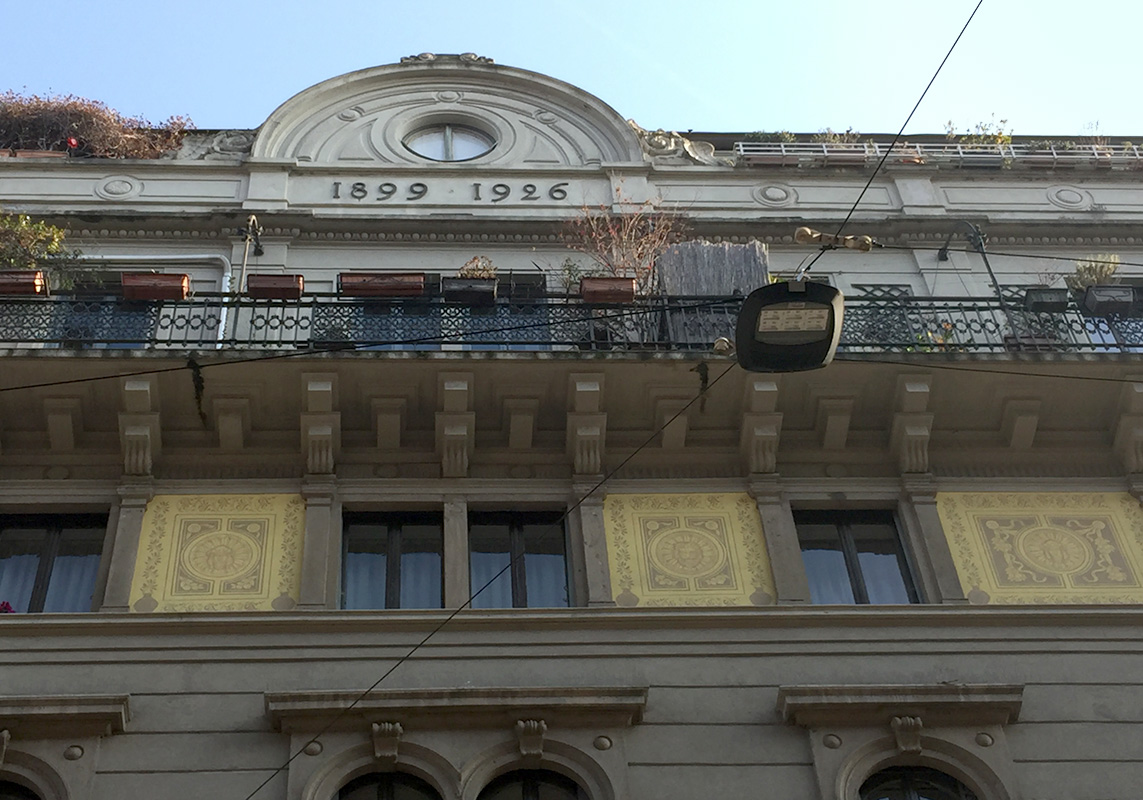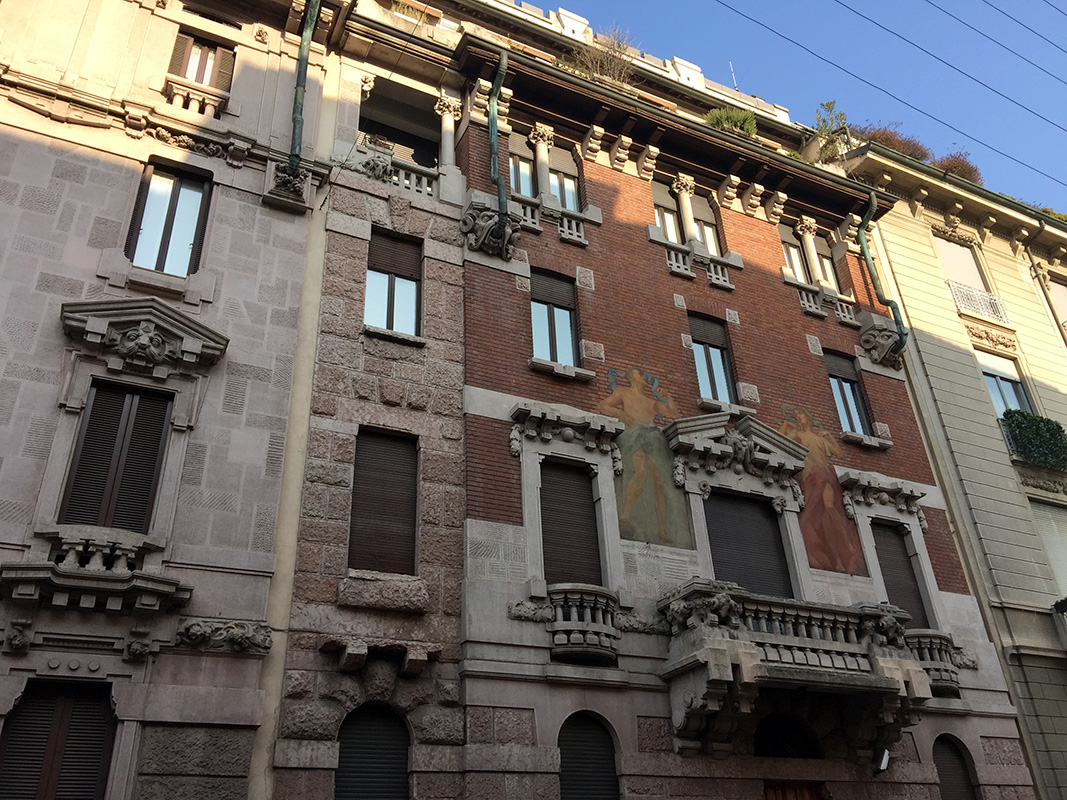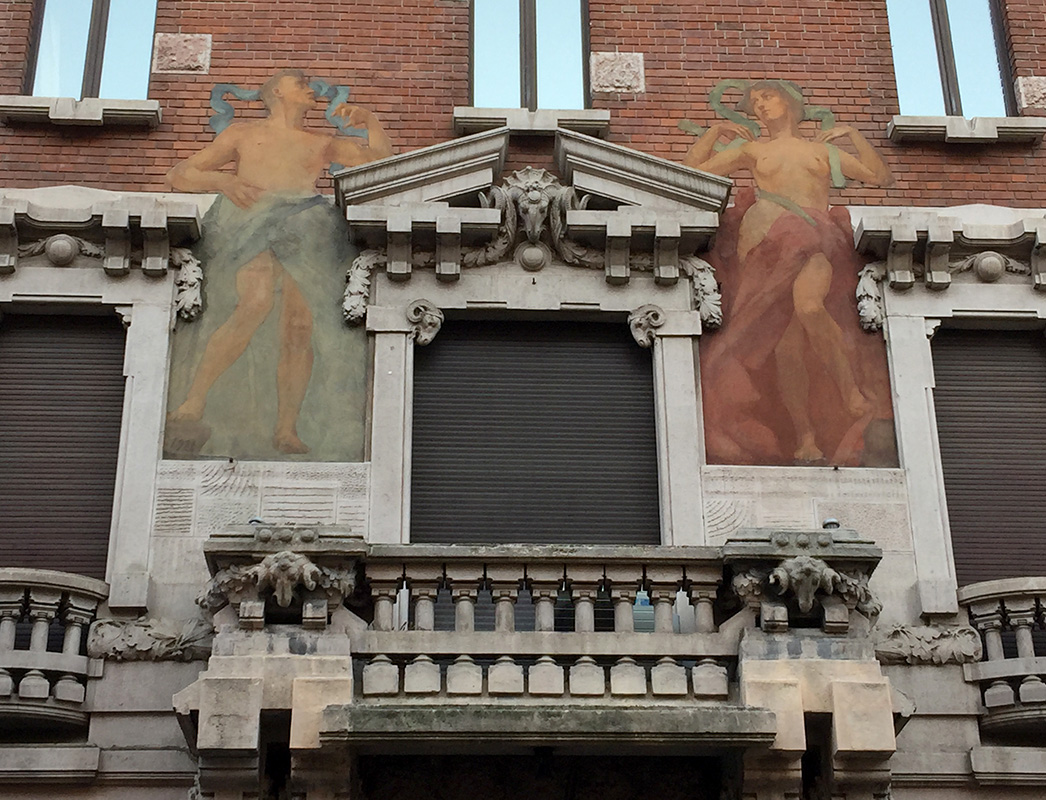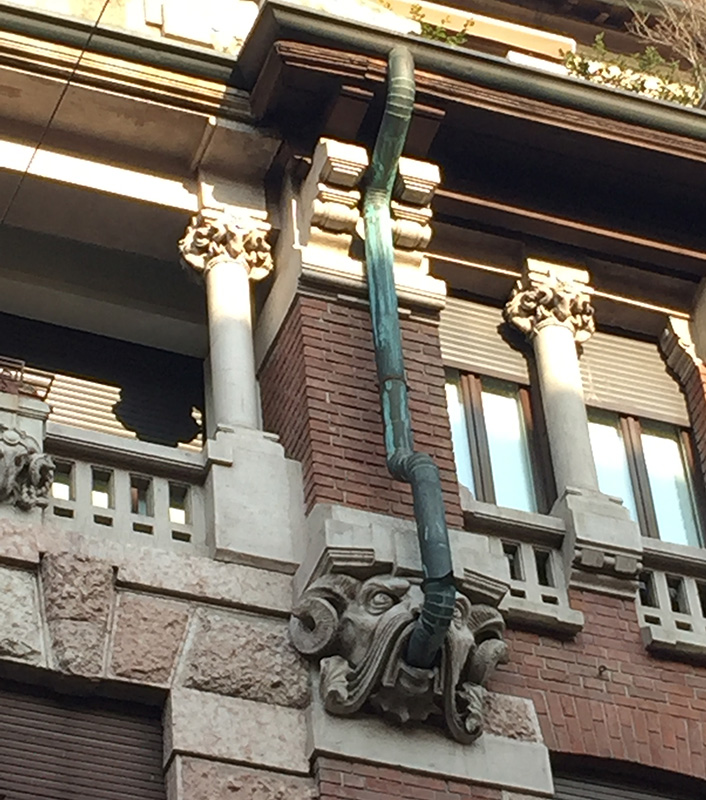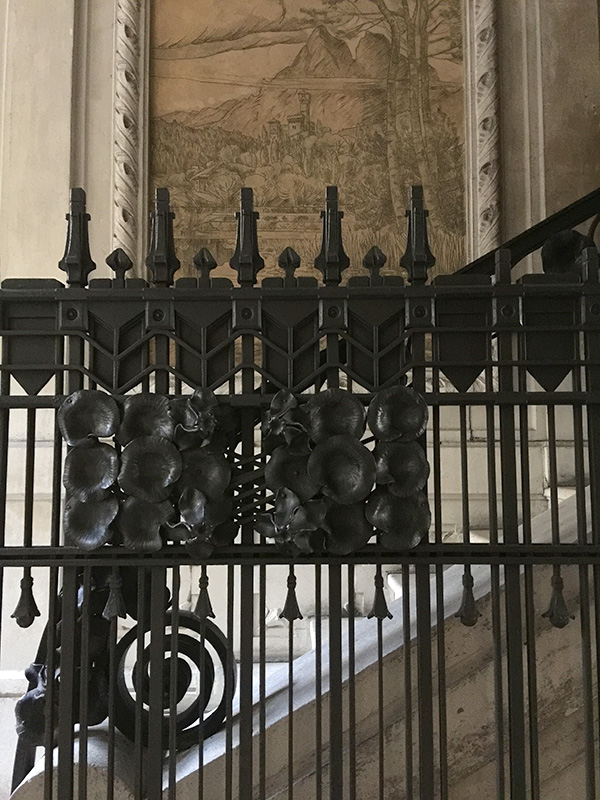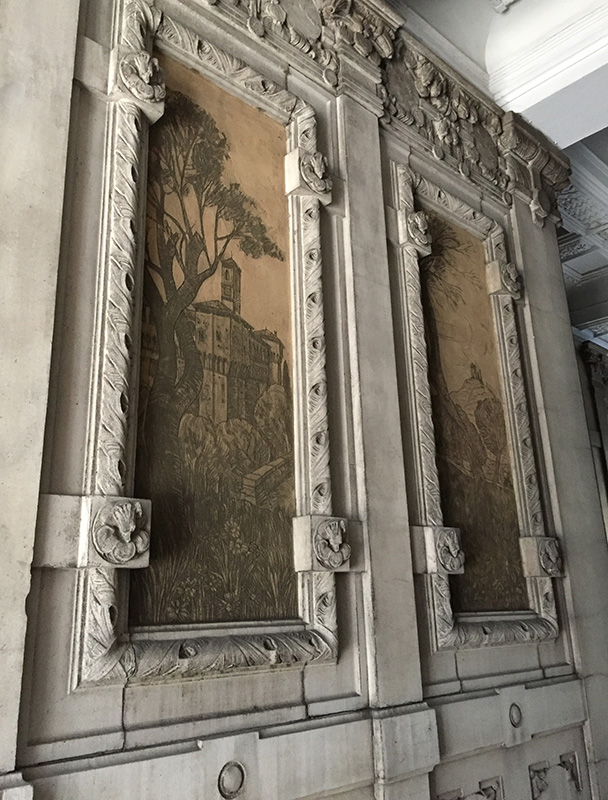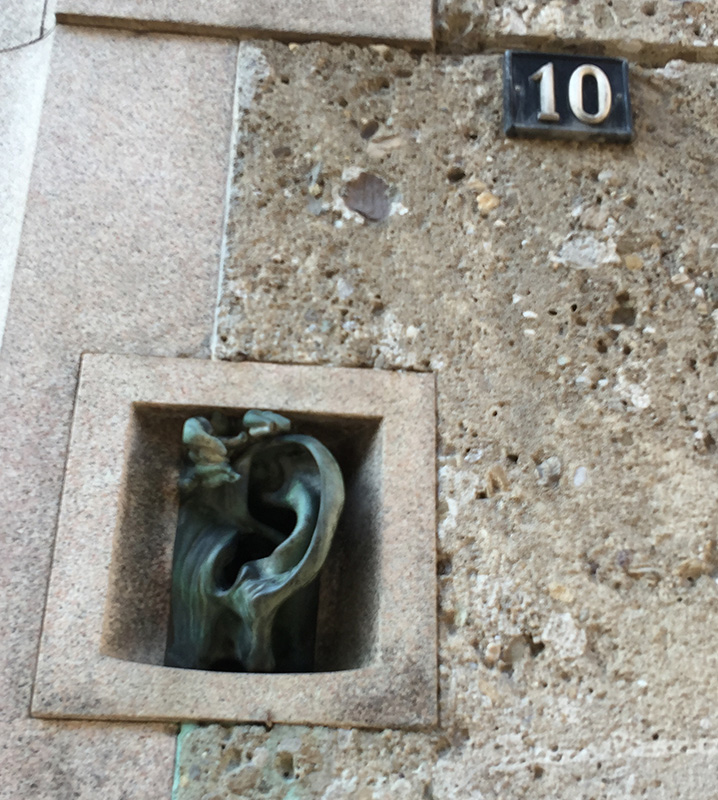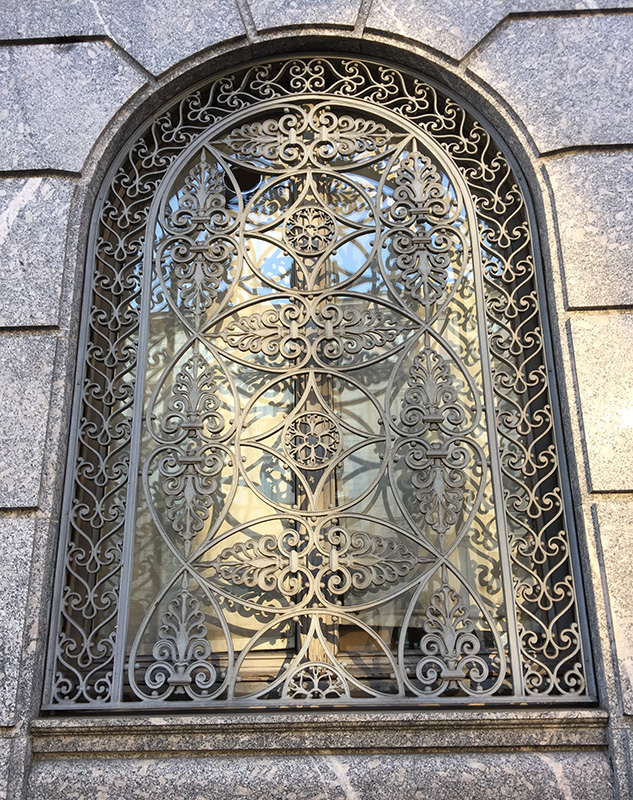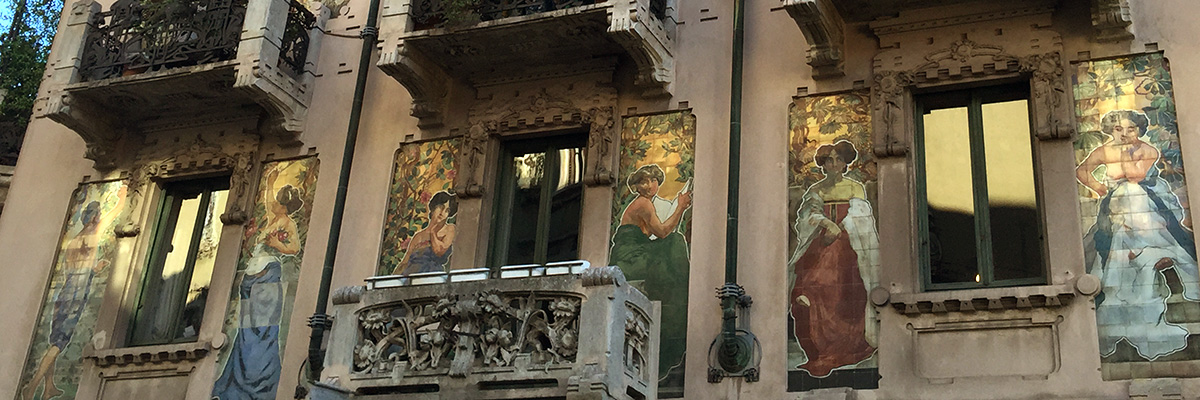
Liberty in Milan
How many times has someone said to me with a sneer, “Oh… Milan. It’s so gray and industrial.” They turn up their noses and dismiss it as merely a place to fly into as they transfer to their “real” destinations.
Yes. Milan is a major international, cosmopolitan city, the financial hub of the country, (also one of the design capitals of the world). Yes, there’s industry. Yes, there’s fog and haze that make the sky leaden-gray in the winter.
But Milan has so much to intrigue the eye for those willing to look… to really see. Right now, I don’t intend to even begin to list the marvels found here. Rather, I want to toss out visual tidbits to introduce “Liberty.” In this case, we’re not talking about freedom, but rather an aesthetic style corresponding to Art Nouveau, as expressed in architecture built here in Milan during a 15-year period at the start of the 20th century.
I offer these photos to tantalize, to counter the dismissals, to show just a few of the many reasons to make Milan more than just a passing-through sort of place.
Over the weekend, on a chilly, sunny, December morning, I joined a group of 10 locals on a “visita guidata” – a guided tour – of specific grand villas and surrounding neighborhoods in which the Liberty Style is so present. The exterior beauty is visible to any passerby. But being able to have interior tours and to hear history is the glory of being with a trained guide. I will begin at the end of our walking tour. (Click on the photos to enlarge them and enter the slide shows.)
Casa Galimberti – Via Malpighi 3
Of all the buildings and all the ornamentation I’ve seen around town, this one is the most jaw-dropping for me. The figurative ceramic tiles and the wrought iron are swoon-worthy and a must-see for any lover of art, architecture and beauty.
From Wikipedia: Designed by the architect Giovanni Battista Bossi (1864-1924) in 1903–1905 on behalf of Galimberti brothers, is considered one of the most brilliant pieces of Liberty Milan thanks to the covering of a large part of the external facade with ceramic figurative tiles, wrought iron and floral motifs in cement, all designed by Bossi.
Palazzo Castiglioni – Corso Venezia 47
From Wikipedia: Palazzo Castiglioni is an Art Nouveau palace of Milan, northern Italy. It was designed by Giuseppe Sommaruga and built between 1901 and 1903. The rusticated blocks of the basement imitate a natural rocky shape, while the rest of the decorations are inspired by 18th century stuccos. The building is now used as the seat of the Unione Commercianti di Milano (Traders’ Union of Milan).
Casa Campanini – Via Bellini 11
From Wikipedia: Casa Campanini (“House Campanini”) is a prominent Art Nouveau building in Milan, Italy, located at 11, Via Bellini. It was realized between 1903 and 1906 by architect Alfredo Campanini, who later inhabited the building.
A main visual feature of the buildings are the concrete caryatids located at its main entrance, by the sculptor Michele Vedani, which represent an obvious reference to those of Palazzo Castiglioni (by architect Giuseppe Sommaruga), another prominent Art Nouveau building of Milan. The wrought iron gate, designed by Campanini himself and realized by Alessandro Mazzucotelli (a renowned representative of Milanese Art Nuoveau sculpture) is decorated with flower patterns; similar decorations are also found in the internal lift cage, also in iron.
The interior of the palace has a number of polychrome glasses, friezes, and frescos, all in an Art Nouveau style; some of the inner rooms still house the original furniture and pottery. Notable decorations, representing cherries, are found on the ceiling of the internal yard.
Palazzo Berri-Meregalli – Via Vivaio 8
From Wikipedia: Built between 1911 and 1913 by architect Piacenza Giulio Ulisse Arata , it is an exuberant example of eclectic architecture.
The palace was manufactured from 1911 along with the other two buildings in the same area, home Berri-Meregali in via Mozart and the second house Berri-Meregalli Via Barozzi.
The building, with its corner facade, conveys a powerful idea of monumentality accentuated by an exasperated eclecticism with Romanesque elements recognizable in the stones, in brickwork, the arches and in the lodges, which alternate with Gothic and Renaissance mixed languages to new taste liberty in vogue in those years with cherubs carved, frescos and wrought iron of the famous Alessandro Mazzucotelli . In the entrance hall you can admire mosaics and ceilings of Angiolo D’Andrea and Adam Rimoldi and the famous sculpture by Adolfo Wildt the victory of 1919.
More Liberty and Other Beautiful
Things Seen Along the Stroll
Wandering around Milan, and Italy itself, feeds my eyes, mind and heart. I relish the creative thoughtfulness put into both broad scale and fine detail. I really LOOK, then take it in, then carry it home with me to let it percolate until it simmers and bubbles into something I set my hand to.
Here are images of other examples of Liberty seen along the guided tour… plus a few other beautiful things I couldn’t resist. Enjoy.

